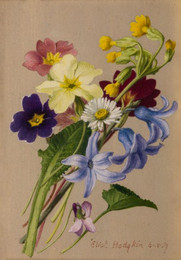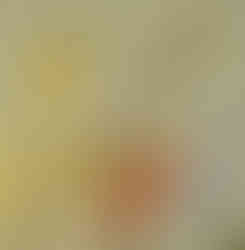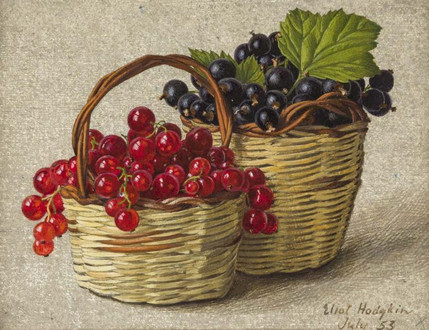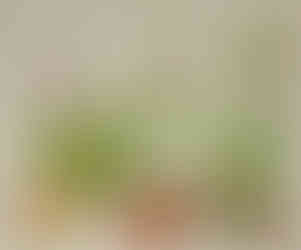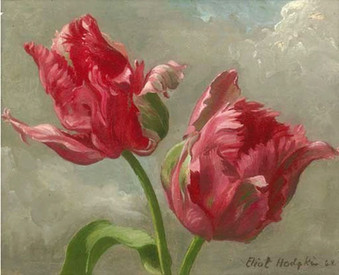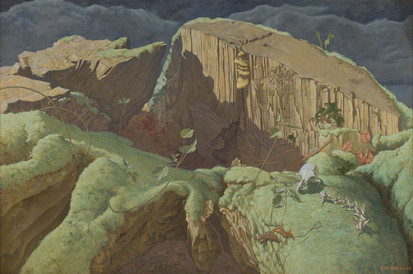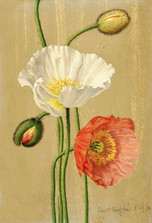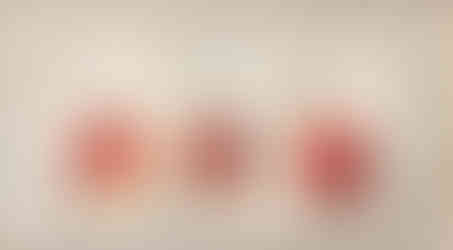Eliot Hodgkin - Gifted Gallery
- Lilium
- May 4, 2022
- 5 min read

Eliot Hodgkin, born 19 June 1905, was an English painter. Eliot began with oil painting in the late 1920s and in 1937 he started painting in tempera. Many of his best-known works are highly detailed still lifes executed either in tempera or oil.
Curwen Eliot Hodgkin was born at Purley Lodge, Purley-on-Thames, near Pangbourne, Berkshire, the only son of Charles Ernest Hodgkin and his wife, Alice Jane (née Brooke). The Hodgkins were a Quaker family and were related to Roger Fry. The scientist Thomas Hodgkin was his great-grandfather's older brother and the abstract painter Howard Hodgkin was his cousin. Eliot was educated at Harrow School from 1919 to 1923. His artistic life started in London at the Byam Shaw School of Art and at the Royal Academy Schools under Francis Ernest Jackson.

In order to prepare works for an exhibition at the Basnett Gallery in Liverpool, Eliot left the Royal Academy School and with two other friends formed the Gresse Group. They shared a studio in the road of the same name in London’s Fitzrovia. After that, Eliot joined the Pandemonium Group, consisting of five artists in their third and fourth exhibitions in the late 1920s.
By the middle of the 1930s Eliot had established himself as a painter of still lifes, landscapes and murals, exhibiting regularly at the Royal Academy. His first one-man exhibition was in London at Picture Hire Ltd. in 1936. As a teacher, in 1936, Eliot worked briefly at the Westminster School of Art, and also conducted art classes for prisoners. Eliot began painting in tempera in about 1937, using a medium based on a recipe given to him by Maxwell Armfield, his friend and former teacher.

On 24 April 1940, Eliot married Maria Clara (Mimi) Henderson (née Franceschi), his lifetime partner. On April 1941 they had their only son, Max. Mimi had a great love for art and helped him organising and filing the records of his work.
During World War II Eliot was working in the Home Intelligence Division of the Ministry of Information. Eliot was very much attracted to the contrast between the ruins of the bombed sites in London and the vegetation growing out of them and proposed making some drawings of plants growing in London's bomb sites to War Artists Advisory Committee. Some originals were seen in March 1945, and as a result, he was offered a 35-guinea commission as part of the War Artists Scheme. Two pictures were delivered in July, and one was accepted. Eliot wrote in the R.W.S. catalogue, 1946:
"Why tempera?... Because tempera enables me most nearly to achieve the effects I am aiming at... I try to show things exactly as they are, yet with some of their mystery and poetry, and as though seen for the first time. And it seems to me that, in trying to depict 'a World in a grain of sand', perhaps the best medium is tempera, because it combines clarity and definition with a certain feeling of remoteness."
Eliot was also a writer. His books include She Closed the Door (1931), Fashion Drawing (1932), 55 Views of London (1948) and A Pictorial Gospel (1949).
In 1950 Eliot illustrated a calendar simply named 'The Months' which has become come of his most well loved works.
Music was Eliot companion whilst painting. He enjoyed opera, late nineteenth and early twentieth century music, and composers such as Berlioz, Mahler, Richard Strauss, Elgar, Verdi and also Handel. Hodgkin also enjoyed jazz, especially Ella Fitzgerald, and was a great fan of BBC Radio 3. Eliot provided a brief description of his interest in still life painting in 1957, in response to an enquiry from the editors of The Studio:
"In so far as I have any conscious purpose, it is to show the beauty of natural objects which are normally thought uninteresting or even unattractive: such things as Brussels sprouts, turnips, onions, pebbles and flints, bulbs, dead leaves, bleached vertebrae, an old boot cast up by the tide. People sometimes tell me that they had never really ‘seen’ something before I painted it, and I should like to believe this… For myself, if I must put it into words, I try to look at quite simple things as though I were seeing them for the first time and as though no one had ever painted them before."
In 1959 he turned down the opportunity of becoming an Academician, but continued to exhibit at the Royal Academy throughout his career, exhibiting a total of 113 paintings at the Royal Academy Summer Exhibitions between 1934 and 1981. Eliot has had one-man shows at the Leicester Galleries, New English Art Club, Picture Hire Galleries, Royal Society of British Artists, Arthur Jeffress Gallery and Agnew's, Wildenstein, and in New York at Durlacher Bros.

In 1967 Eliot contributed an article "How I Paint in Tempera" to "Tempera: Yearbook of the Society of Painters in Tempera" in which he wrote: "Tempera has no attraction for me simply because it was used by the Italian primitives, most of whose work does not greatly appeal to me. I use it because it is the only way in which I can express the character of the objects that fascinate me. With oil paint I could not get the detail without getting also a disagreeable surface: moreover I should have to wait while the paint dried before continuing."
He also had a great love for architecture and belonged to various supportive groups, which also included art groups. Eliot contributed to the restorations of churches and bequeathed moneys to The Victorian Society and The Georgian Group. He also used to rent special buildings in the UK for short periods of time such as a Pineapple House, a converted Light House and a residential flat at Scotney Castle. For his annual summer holidays abroad, he would select places of interest such as Palladian buildings outside Venice, a farmhouse outside Florence and several places in France, such as a fortified village in the South of the country and near the ruins of the Marquis de Sade’s Chateau. He also invited various art friends to share these venues with him and the family.

Art collecting was also amongst the many interests of Eliot. He would often visit antique shops looking for new additions and inspirations. Usually, in the early spring, he would go with Mimi on art tours to visit Barcelona, Istanbul, Japan, India, as well as other interesting cities and countries. In Istanbul, for instance, he visited with his son Max the interior of an old Christian Church, which had been transformed into a Turkish bath. Eliot often made a scrapbook of his journeys.
In 1979 Eliot stopped painting because of worsening eyesight. During the last years of his life, Eliot suffered from a crippling disease, described as an ataxia. He had a large library to seek solace in, mainly of art books, but it also included travel, architecture, religion and historical biographies.
Eliot Hodgkin died 30 May 1987, aged 81, London, England. After Eliot's death, Hazlitt, Gooden & Fox did a retrospective exhibition in 1990. In 2019, after almost 30 years, Brought to Life: Eliot Hodgkin Rediscovered was the first major exhibition of the artist’s works, and took place in Waddesdon Manor. In a letter written to Sir Brinsley Ford, Eliot had wrote: "I like to show the beauty of things that no one looks at twice."
Reading Recommendations & Content Considerations
Brought to Life Eliot Hodgkin
Eliot Hodgkin Rediscovered Website










































